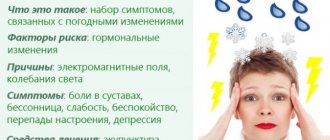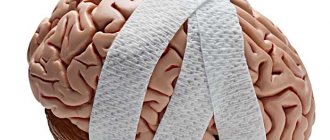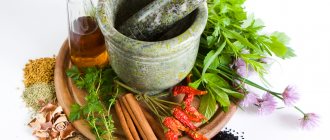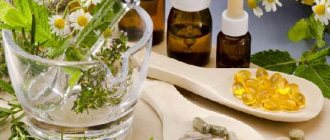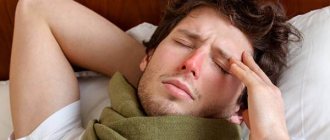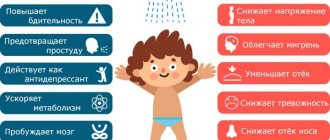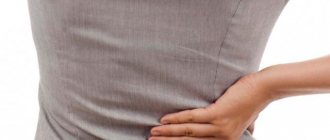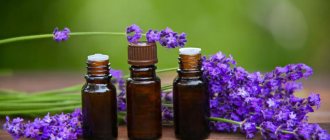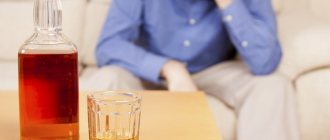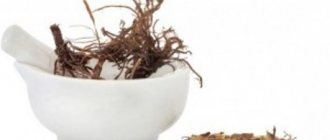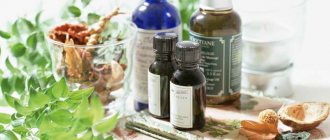Is it possible to treat cerebral atherosclerosis with folk remedies and how successful is it?
The danger of cerebral atherosclerosis lies in the high risk of deterioration of cerebral circulation.
Complications associated with this lead to “senile dementia”: forgetfulness, gradual loss of short-term and then long-term memory, disturbance of spatial orientation and time boundaries, personality disorder of the psyche. Timely drug treatment aimed at normalizing lipid metabolism, blood pressure, and cerebral circulation prevents the consequences of the disease. It is worth remembering that herbal medicine can only help at the initial stage of the disease. When choosing alternative medicine regimens, take into account that:
- the effectiveness of herbal remedies is lower than that of drugs;
- when using a mixture of herbs, there is a high risk of side effects due to individual intolerance or allergies;
- tinctures and extracts with alcohol or alcohol are contraindicated for diseases of the gastrointestinal tract, liver, gastritis, esophagitis, peptic ulcer;
- normalization of body weight and metabolism plays a key role in the treatment of atherosclerosis;
- when choosing herbal remedies, pay attention to which formulations are more effective for metabolic disorders and high cholesterol;
- in addition to taking herbal remedies, all patients are prescribed a diet with limited fat intake and a decrease in daily calorie intake;
- Without examination by a doctor, it is impossible to assess the success of the chosen treatment;
- if therapy with alternative medicines is not effective enough, progressive atherosclerosis with complete blockage of the vessel leads to a sudden circulatory disorder, stroke.
What traditional medicine methods are effective?
To treat cerebral atherosclerosis at home, it is necessary to take into account their spectrum of action when choosing herbal remedies. The most recommended are herbal preparations with a lipid-lowering effect, which reduce the formation of harmful lipoproteins, speed up metabolism and remove cholesterol from the body. Herbs help improve fat metabolism, reduce the manifestations of vascular spasm and increase their tone, prevent blood thickening, and contain vitamins and minerals.
The most popular recipes are:
- A teaspoon of dry lemon balm, mint, nettle leaves and strawberries is poured into 400 ml of boiling water, left for 60-90 minutes and filtered. The resulting infusion is drunk a glass a day for two to three weeks. After a break of five days, the course is repeated if desired.
- Pour 300 ml of boiling water over a tablespoon of dried burdock and dill leaves and leave for an hour. Consume throughout the day. Course up to seven days.
- 5-10 g of dry leaves of coltsfoot, hawthorn, mint and lemon balm, pour 500 ml of boiling water, let it brew for 2-3 hours. After straining, drink the infusion half a glass before lunch and dinner for a week. After a break of five days, repeat the course.
- Pour a teaspoon of dried strawberries and rose hips, mint leaves and lemon balm into 400 ml of boiling water and leave in a warm place for half an hour. After straining, drink 150 ml before meals. It is recommended to take seven to ten days.
- For the decoction, mix a tablespoon of rose hips, strawberries, lingonberries, peppermint leaves and lemongrass, add 4 cups of warm water and simmer over low heat for 10-20 minutes. Then leave for another 20 minutes. and strain. Drink the drink 50-100 ml per dose before or after meals for 10-15 days. After a break of a week, repeat.
Multicomponent preparations are recommended to continue the course of treatment. To prepare a herbal drink, take equal parts of dry ingredients (10 g), pour 300-400 ml of boiling water, heat over low heat and leave for 1-2 hours in a warm place. The course of treatment is two to four weeks for six months with breaks. The following components are used:
- Dried rose hips, lingonberries, rowan with strawberry and mint leaves.
- Corn silk, elecampane grass with mint and lemongrass.
- Dill, sorrel, yarrow with mint and lemon balm.
- Dried hawthorn berries, peeled raspberry and lingonberry shoots.
- Oregano, elecampane rhizomes with lemon balm.
- Two small cloves of garlic, zest and juice of one lemon.
- Dried dill seeds.
- Juice of one lemon, a teaspoon of honey and olive oil.
- Dried lemon balm leaves, lemon zest.
- Rowan bark and berries.
Also, medicinal herbs for cerebral atherosclerosis are used to prepare alcohol tinctures. Alcohol, used as a solvent, extracts all the most beneficial properties from plant materials. For each remedy, two tablespoons of pharmaceutical dry herbs are poured into 300-500 ml of 40% alcohol or vodka, and left for a week in a cool, dark place.
Unlike infusions with boiling water, you do not need to drink large volumes of liquid; 5-15 drops of the prepared strained extract are enough. Considering the irritating effect of ethyl alcohol on the mucous membrane of the gastrointestinal tract, add the concentrate to a glass of plain cool water.
The following folk remedies are used to prepare one-component alcohol infusions:
- dried clover flowers;
- Japanese sophora pods;
- dry walnut partitions;
- inflorescences and leaves of meadow clover;
- dry roots and leaves of elecampane.
Some foods are used as an alternative to treat atherosclerosis. Naturopathic experts recommend the following recipes:
- To prepare a horseradish decoction, rub the peeled dry rhizomes on a fine grater, pour 2 liters of boiling water and leave for 40 minutes. After filtering, the warm drink is consumed 30-50 ml before meals for 2-4 weeks.
- A similar decoction is prepared from the leaves and stems of parsley and dill.
- Garlic is effective in the fight against atherosclerosis - the cloves are added to food, or the resulting juice is mixed with a spoonful of honey and consumed before meals for a month.
- Onion juice mixed with a spoonful of honey and lemon juice helps normalize metabolism.
- To prevent atherosclerosis, it is useful to drink freshly squeezed juices from currants, lingonberries or cranberries.
- Food products include kelp, beets, radish and carrot salad.
- It is recommended to include green salads and fresh cabbage in your meals.
- Dairy products are chosen with low fat content (up to 10%).
- Fatty meat is replaced with sea fish.
- Green and herbal teas are beneficial.
In order for therapy with herbal preparations to lead to positive results, they are treated for a long time (more than two to four months). However, side effects develop from the use of tinctures and decoctions, since frequent intake of berries and herbs affects the level of acidity of gastric juice, which manifests itself:
- discomfort in the stomach or intestines;
- exacerbation of gastritis;
- indigestion, diarrhea;
- unpleasant taste in the mouth;
- sour belching;
- nausea, heaviness in the epigastric region.
Tinctures and extracts containing alcohol are contraindicated:
- women during pregnancy;
- children;
- with unstable blood pressure;
- vegetative-vascular dystonia of the hypertensive type;
- diseases of the gastrointestinal tract;
- liver pathologies.
Mechanism of the disease
Atherosclerosis occurs due to deposits of cholesterol plaques on the walls of the arteries that supply blood to the brain. As a result, there is a decrease in the lumen between the walls of the vessels, leading to a decrease in their throughput. The amount of blood entering the brain decreases sharply. Its supply of oxygen and other nutrients is disrupted. This leads to memory impairment, headaches and other manifestations of the disease.
Most often, the formation of atherosclerotic plaques causes a pathological condition of the vessels of the brain and cervical spine. This happens as follows:
- When eating foods that are too fatty or not eating enough fiber-rich foods, cholesterol levels in the blood increase.
- The walls of the arteries lose their elasticity. Cracks appear on them, in which small spots-plaques form.
- Atherosclerotic plaques, like a magnet, attract platelets - blood cells that promote blood clotting. At the same time, they grow like a snowball, forming a blood clot and reducing the gap between the walls. In some cases, complete closure of the blood vessel occurs.
Typically, this process begins with a narrowing of the blood vessels in the neck, in particular the carotid artery.
In what cases should you not resort to alternative medicine?
Treatment with traditional methods is considered as primary therapy or additional therapy to enhance the effect of taking medications. When choosing a treatment regimen for a patient with cerebral atherosclerosis, the degree of damage to the cerebral arteries, narrowing, and blockage is taken into account. Without laboratory tests and examination of the vessels of the head, it is impossible to determine the stage of the disease. At the initial stages of the disease, the use of folk remedies is important.
Herbal medicine is not rational for:
- The second stage of the disease, when the first symptoms appear - headaches, tinnitus, forgetfulness.
- In the third stage, if thinking is impaired, memory decreases, and intermittent episodes of weakness appear in the arms and legs.
- At an advanced stage, when senile dementia develops, the psyche is disturbed.
- Mentally unsatisfactory condition, disorientation, frequent hysterics, crying.
- The first signs of severe cerebral ischemia (ministroke), with impaired motor activity, paralysis or paresis of the arms and legs.
In such cases, treatment with drugs is required in a neurological or general medical hospital. The following medications are prescribed: antiplatelet agents (preventing the formation of blood clots), anti-inflammatory drugs, lipid-lowering drugs (to improve fat metabolism and cholesterol synthesis), antihypertensive drugs (lowering blood pressure). In case of a life-threatening stroke, emergency surgery is indicated.
Course of the disease
This disease can occur in chronic and acute forms. The acute form is the background to the development of cerebral infarction or more severe hemorrhagic stroke (bleeding in the brain). Often such crises lead to sudden death. In a chronic course, the symptoms of vasoconstriction increase slowly. First, rapid fatigue is noted even when performing an average amount of work, then headaches appear. Periodically, a person experiences dizziness. Sometimes he forgets obvious things.
The chronic course has three stages:
- The first one is the easiest. It is believed that it is asymptomatic, since most people associate a slight decrease in ability to work with overexertion at work, lack of sleep, changes in weather and other factors. And of course he’s in no hurry to see a doctor.
- The next stage (second) is accompanied by a disruption in the functioning of individual organs, for example, the urinary system or the musculoskeletal system, causing a change in gait. A person, without noticing it, begins to mince or shuffle his feet while walking. Limbs may feel numb from time to time. The patient is irritated by everything. The constant change of his mood becomes the cause of conflicts and quarrels. These symptoms last no more than a day. But the occurrence of any of them is a reason to consult a doctor.
- Narrowing of the blood vessels in the head at the third stage manifests itself as a more serious disruption in the functioning of the brain. In this case, the person loses the ability to coordinate his movements. Therefore, he begins to move slowly. He walks, as if feeling his way. As the disease progresses, the control centers of the musculoskeletal system completely cease to function. A person loses the ability not only to move, but also to stand on his own two feet. Speech is often impaired and vision loss occurs.
The danger of this disease is that most people self-medicate, relieving headaches with analgesics, without giving serious attention to the causes that cause them. As a result, treatment for cerebral vasoconstriction begins too late, when the patient’s condition is close to pre-infarction or stroke.
conclusions
Treatment of cerebral atherosclerosis with folk remedies is rational only at the initial stage of the disease. Considering the high risk of consequences (gradually progressive cerebrovascular accident, development of senile dementia, dementia, threat of stroke), doctors strongly do not recommend resorting to alternative medicine. According to recent studies, herbal remedies are prescribed in addition to the medication regimen to improve the effect and more quickly normalize metabolism, fats and cholesterol. However, the basis of therapy is pharmaceutical drugs according to generally accepted treatment protocols in medicine.
